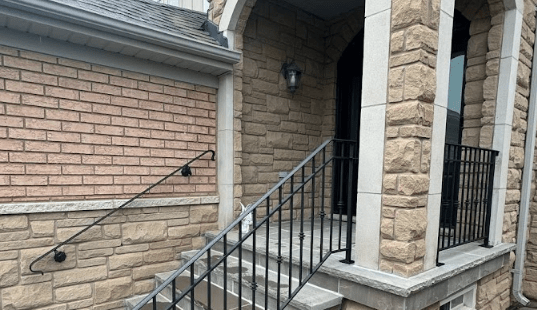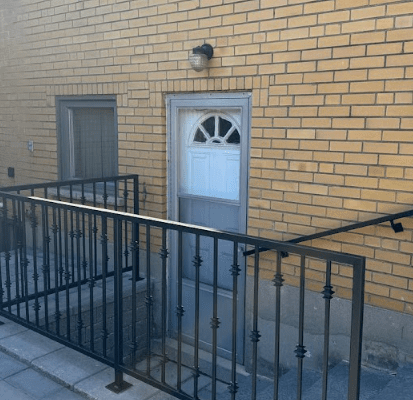Last Updated on June 16, 2025 by chanuka chanuka.23e2
Published: February 26, 2025
Steel railings are a popular choice for both residential and commercial properties due to their durability and sleek appearance. However, winter conditions can pose a significant threat, as snow, ice, and moisture increase the risk of rust and corrosion. Taking proactive steps to protect your steel railings during the winter months will not only maintain their aesthetic appeal but also extend their lifespan.

Key Takeaways
- Rust prevention is critical for maintaining steel railings during winter.
- Regular maintenance, cleaning, and protective coatings play a vital role.
- Simple preventative measures can avoid costly repairs or replacements.
Why Steel Railings Are Vulnerable to Rust
- Moisture Exposure
- Snow and ice can accumulate on steel railings, leading to prolonged exposure to moisture.
- Salt Damage
- De-icing salts used on walkways and roads can corrode steel surfaces when they come into contact.
- Temperature Fluctuations
- Freezing and thawing cycles can cause tiny cracks in protective coatings, exposing the metal underneath.
Steps to Prevent Rust on Steel Railings
1. Clean Thoroughly Before Winter
- Remove dirt, grease, and debris using a mild detergent and water.
- Pay close attention to crevices where moisture can accumulate.
2. Apply a Protective Coating
- Use a high-quality rust-inhibiting primer and paint designed for metal surfaces.
- Consider applying a clear sealant for added protection against moisture and salt.
3. Avoid Direct Contact with De-Icing Salts
- Use non-corrosive alternatives like sand or calcium magnesium acetate near steel railings.
- If salts are unavoidable, rinse railings frequently to remove residue.
4. Install Covers or Barriers
- Use rail covers or plastic shields to prevent direct contact with snow and ice.
- Ensure the railings are accessible for inspections and cleaning.
5. Inspect Regularly Throughout Winter
- Check for signs of rust or damage, such as discoloration or pitting.
- Address small rust spots immediately by sanding and recoating the affected area.
6. Remove Snow Buildup Promptly
- Use a soft-bristled brush or broom to gently remove snow without scratching the surface.
Long-Term Maintenance Tips
- Annual Inspections: Have a professional inspect your railings for structural integrity and potential vulnerabilities.
- Upgrade to Galvanized or Powder-Coated Steel: These options provide superior resistance to rust and corrosion.
- Routine Cleaning: Keep railings clean year-round to minimize the risk of damage.

Final Thoughts
Protecting your steel railings from rust during winter months requires a combination of regular maintenance and proactive measures. By investing time in cleaning, applying protective coatings, and inspecting for damage, you can ensure your railings remain strong and visually appealing for years to come. Prevention is always more cost-effective than repair, so start preparing before winter arrives.
FAQs
What is the best type of paint for preventing rust on steel railings?
Last Updated on June 16, 2025 by chanuka chanuka.23e2
Look for rust-inhibiting primers and paints specifically designed for metal surfaces, such as epoxy-based paints.
How do I remove rust that has already formed?
Last Updated on June 16, 2025 by chanuka chanuka.23e2
Use a wire brush or sandpaper to remove rust, clean the area thoroughly, and apply a rust converter before repainting.
Can steel railings be left untreated during winter?
Last Updated on June 16, 2025 by chanuka chanuka.23e2
It’s not advisable. Untreated steel is highly susceptible to rust and corrosion, especially in harsh winter conditions.
Are stainless steel railings completely rust-proof?
Last Updated on June 16, 2025 by chanuka chanuka.23e2
While stainless steel is more resistant to rust, it can still corrode under extreme conditions, especially if the surface is scratched or exposed to salt.
 Chat
Chat 








